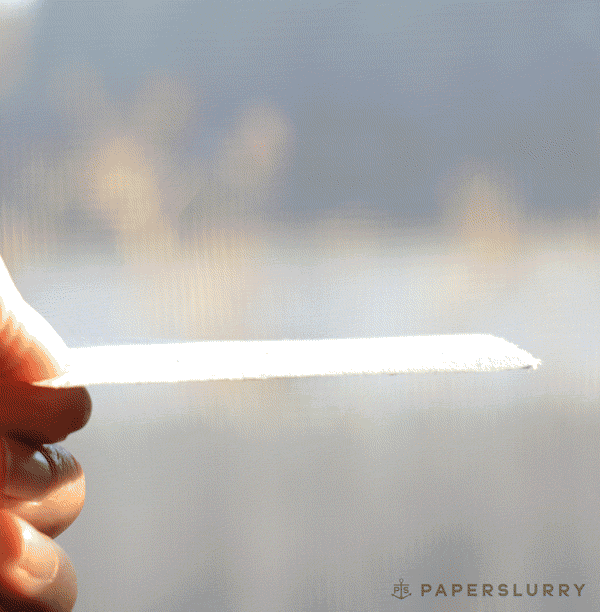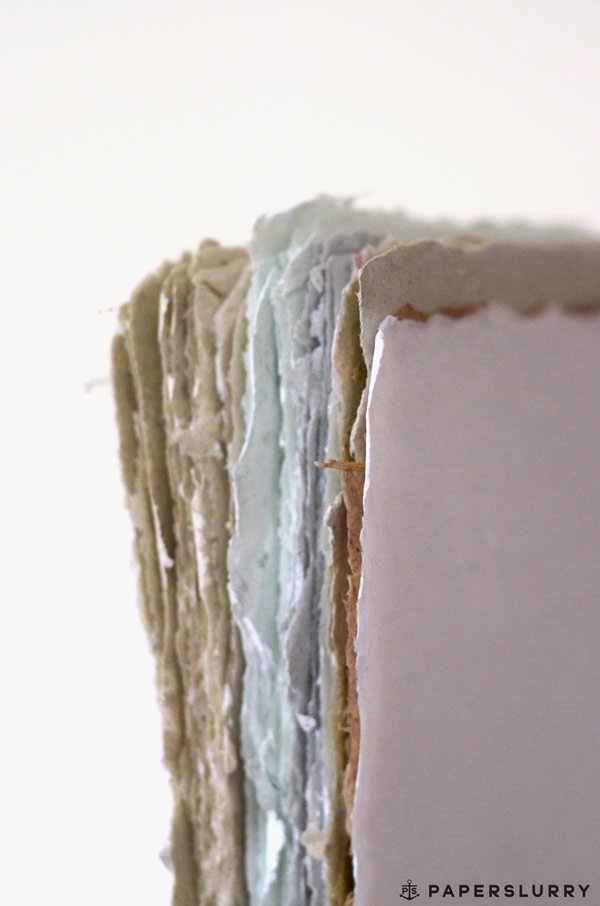The Real Deckle Edge in Handmade Paper (Animated GIF!)
Why would one go through the lengthy process of making paper by hand? Especially when Staples has a pack of 500 perfect, white sheets for under 10 bucks?
Well.
We’re romanticizing the handcrafted object. It’s a trend that recognizes the value of letterpress wedding invites or handmade knitted scarves from Etsy over machine-made items. Handmade paper is SO cottage-core. And makes one think that the Industrial Revolution was a mistake…?
In handmade paper, the tell-tale sign is a deckle edge. The edges of the paper are actually thinner, and look lighter when held up to a light. Back in the day, this irregular, feathery edge was unavoidable in the hand papermaking process. A deckle edge was seen as a blemish, but now, it’s something to distinguish a paper as handmade, since machine-made paper is produced in rolls with the edges trimmed off.
A deckle edge is often falsely imitated (the paper is torn, or cut with an uneven edge), and used as an effect or design choice.
In reality, a true deckle edge a technical result of the handmade process.
HOW A DECKLE EDGE IS FORMED
A mould and deckle is used to form sheets of paper. The mould is basically a frame with a screen stretched across. The deckle is a frame that fits on top of the mould. Held together, the mould and deckle is dipped into a vat of pulp.
The pulp runs up against the deckle, which acts just like a fence or barrier, and thus forms the edges of the paper.
How a deckle edge looks depends on the angle of the bevel and inner dimensions of the deckle. Also, when a handmade sheet is pressed, a small amount of fiber is formed beyond the edges of the paper, also contributing to the creation of the deckle edge.
There’s a huge range of deckle edges, with many qualities. Each hand papermaker is different, and so are their deckle edges!




